AMD Radeon RX 9070 XT: In-Depth Review
For the last couple of generations, AMD has been fiercely challenging Nvidia at the high end of the graphics card market. However, with the launch of the AMD Radeon RX 9070 XT, Team Red has strategically shifted its focus. Instead of competing head-to-head with the ultra-high-end RTX 5090, AMD has set its sights on delivering the best graphics card for the majority of gamers—a goal it has achieved remarkably well.
The AMD Radeon RX 9070 XT, priced at $599, goes toe-to-toe with the $749 GeForce RTX 5070 Ti, positioning itself as one of the top GPUs available today. AMD enhances its value proposition with the introduction of FSR 4, marking the first time AI upscaling technology has been integrated into an AMD graphics card. This makes the Radeon RX 9070 XT an excellent choice for 4K gaming, especially for those not willing to spend an exorbitant $1,999 on the RTX 5090.
Purchasing Guide
----------------The AMD Radeon RX 9070 XT will be available starting March 6, with a base price of $599. Be aware that prices may vary, as third-party cards could be priced higher. Aim to secure one for under $699 to get the best value.
AMD Radeon RX 9070 XT – Photos

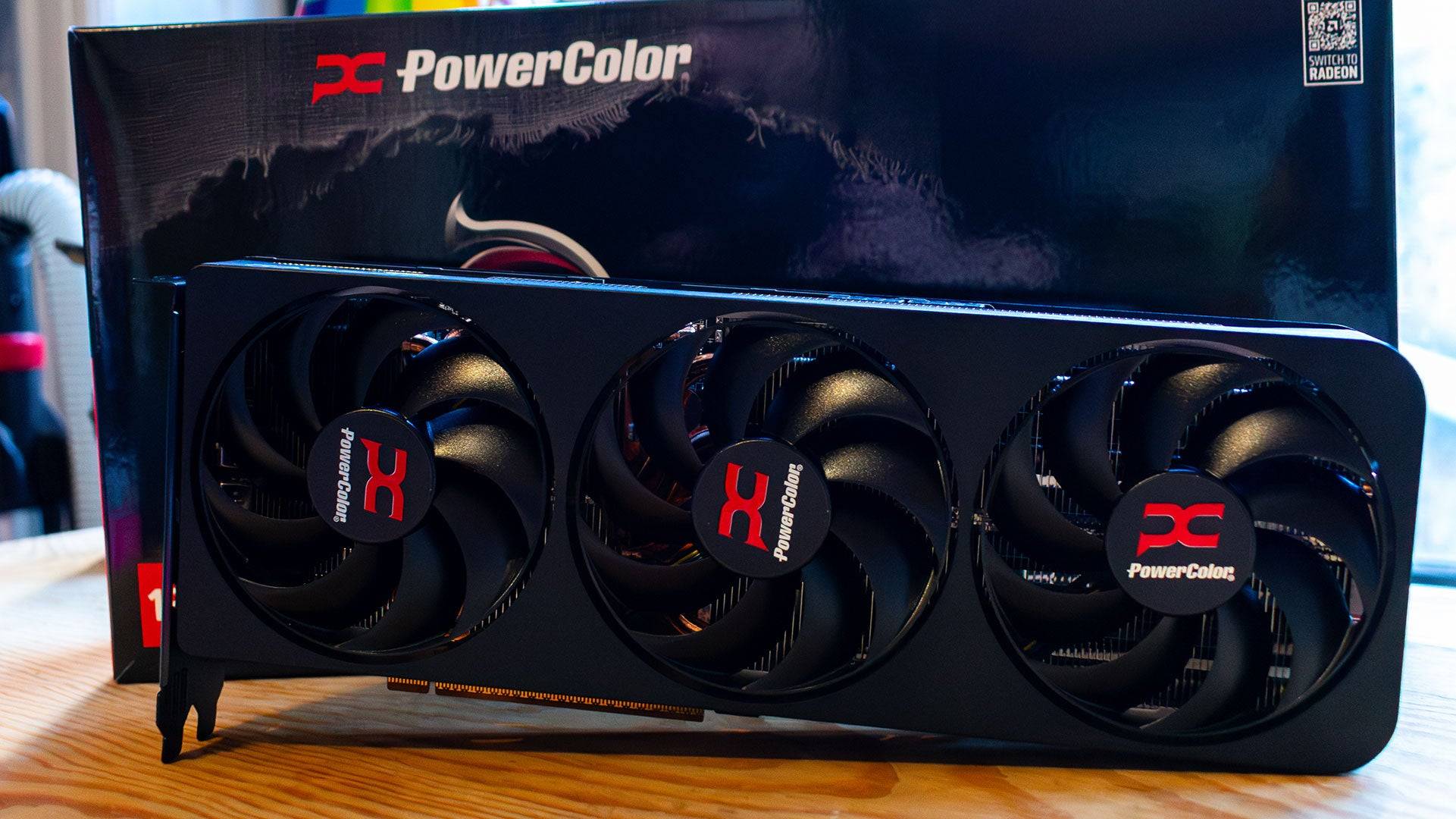 4 Images
4 Images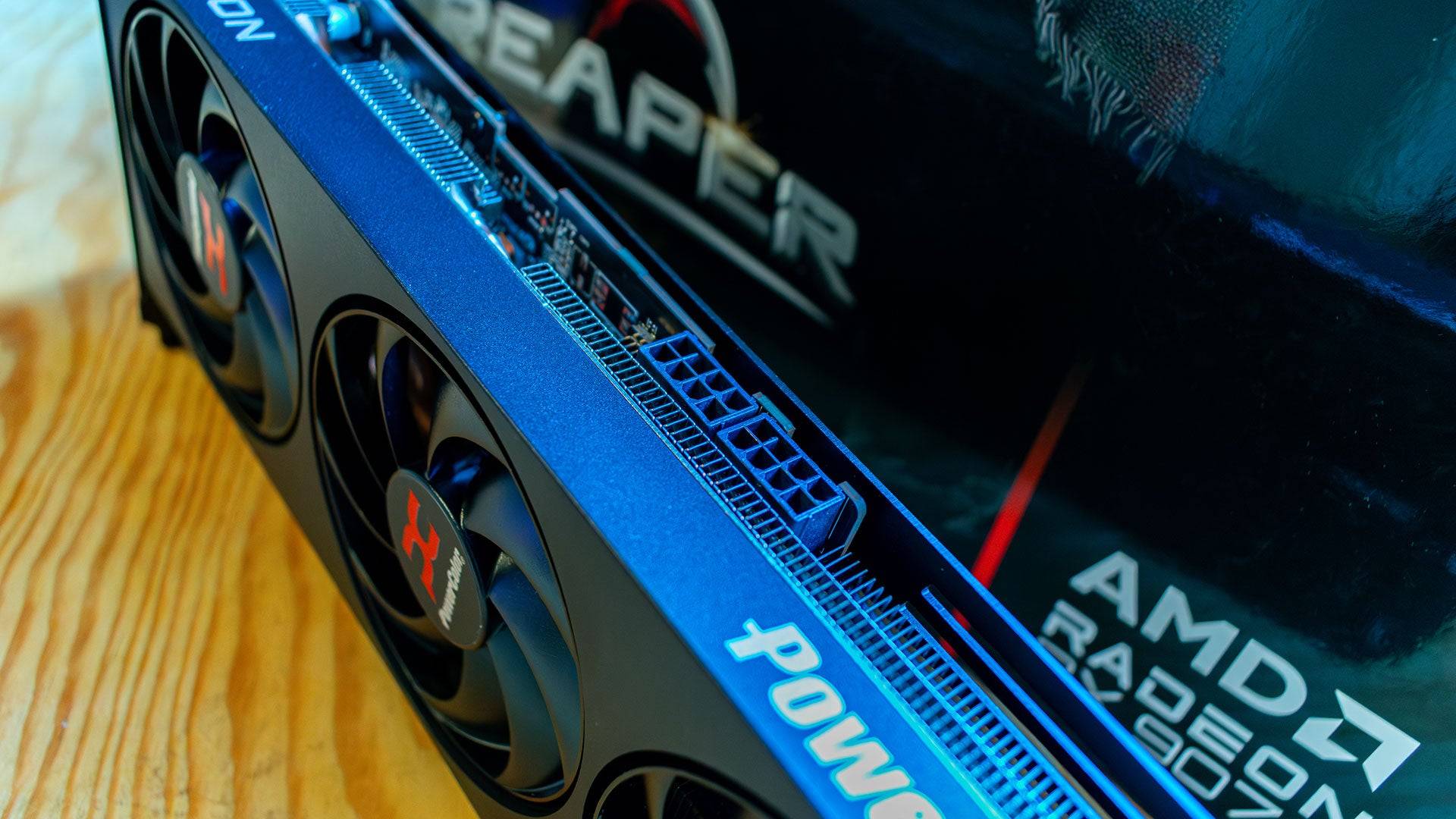
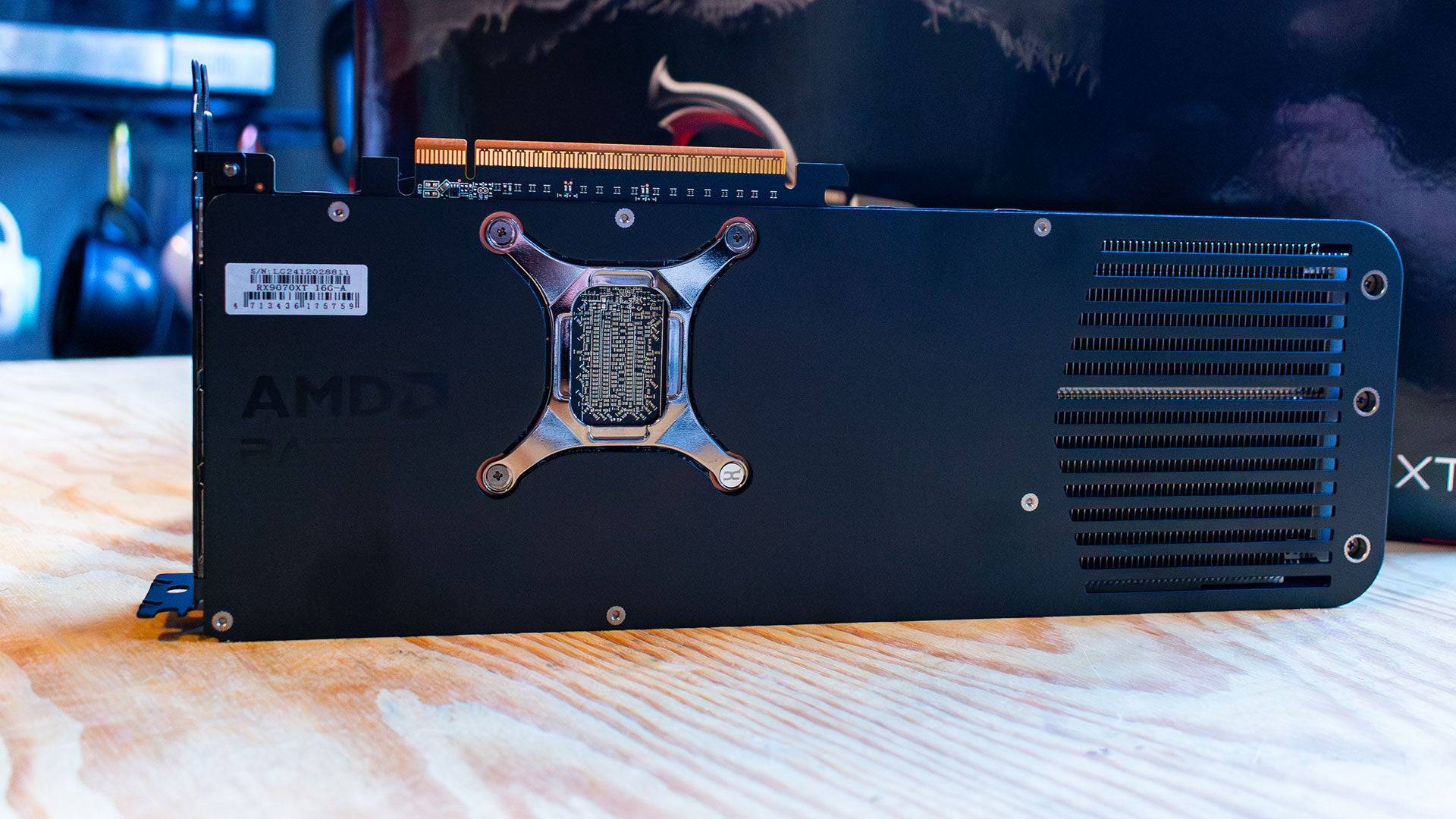
Specs and Features
------------------Built on the RDNA 4 architecture, the AMD Radeon RX 9070 XT brings significant improvements to its shader cores, but the real highlights are the new RT and AI Accelerators. The AI Accelerators power FidelityFX Super Resolution 4 (FSR 4), marking the debut of AI upscaling on AMD GPUs. While FSR 4 may not boost frame rates as much as FSR 3.1, it significantly enhances image quality. Users who prioritize frame rates can easily disable FSR 4 through the Adrenalin software.
AMD has also enhanced the efficiency of its shader cores, enabling the Radeon RX 9070 XT to deliver superior performance with fewer Compute Units (64) compared to the previous generation's Radeon RX 7900 XT (84). Each Compute Unit contains 64 Streaming Multiprocessors, totaling 4,096, alongside 64 ray accelerators and 128 AI accelerators.
Despite these advancements, the Radeon RX 9070 XT comes with 16GB of GDDR6 memory on a 256-bit bus, less than the RX 7900 XT's 20GB on a 320-bit bus. While this represents a reduction in both capacity and bandwidth, it remains sufficient for most 4K gaming needs. However, retaining GDDR6 instead of upgrading to GDDR6X might have been a missed opportunity.
The RX 9070 XT has a slightly higher power requirement of 304W compared to the 7900 XT's 300W. Interestingly, during testing, the 7900 XT consumed more power, peaking at 314W versus the 9070 XT's 306W. With a standard power budget, cooling the 9070 XT should be manageable. Notably, AMD has not released a reference design for this model, leaving third-party manufacturers to fill the gap. The Powercolor Radeon RX 9070 XT Reaper, with its compact triple-fan design, maintained a stable 72°C temperature during my tests.
The card retains traditional power connectors, requiring two 8-pin PCI-E connectors, and includes three DisplayPort 2.1a and one HDMI 2.1b ports. While it lacks a USB-C port, the connectivity remains robust for modern gaming needs.
FSR 4
-----For years, AMD has sought a competitive AI upscaling solution to rival Nvidia's DLSS. With the Radeon RX 9070 XT, AMD introduces FSR 4, an AI-powered upscaling technology that addresses previous issues of ghosting and fuzziness found in earlier FSR versions. FSR 4 utilizes AI accelerators to enhance image quality by analyzing previous frames and game engine data, though it does result in a slight performance hit compared to FSR 3.1.
In Call of Duty: Black Ops 6 at 4K Extreme settings, the Radeon RX 9070 XT achieved 134 fps with FSR 3.1 in "Performance" mode, but this dropped to 121 fps with FSR 4—a 10% performance decrease, albeit with improved image quality. Similarly, in Monster Hunter Wilds, the card managed 94 fps with FSR 3 and ray tracing enabled, but this fell to 78 fps with FSR 4, a 20% drop.
This performance trade-off is expected, as AI upscaling is inherently more demanding than temporal upscaling. AMD acknowledges this and emphasizes that the improved image quality compensates for the performance hit, particularly for gamers prioritizing visual fidelity in single-player experiences.
FSR 4 is an opt-in feature that can be easily toggled off in the Adrenalin software, which was disabled by default in my review unit, possibly due to early drivers.
AMD Radeon RX 9070 XT & 9070 – Benchmarks
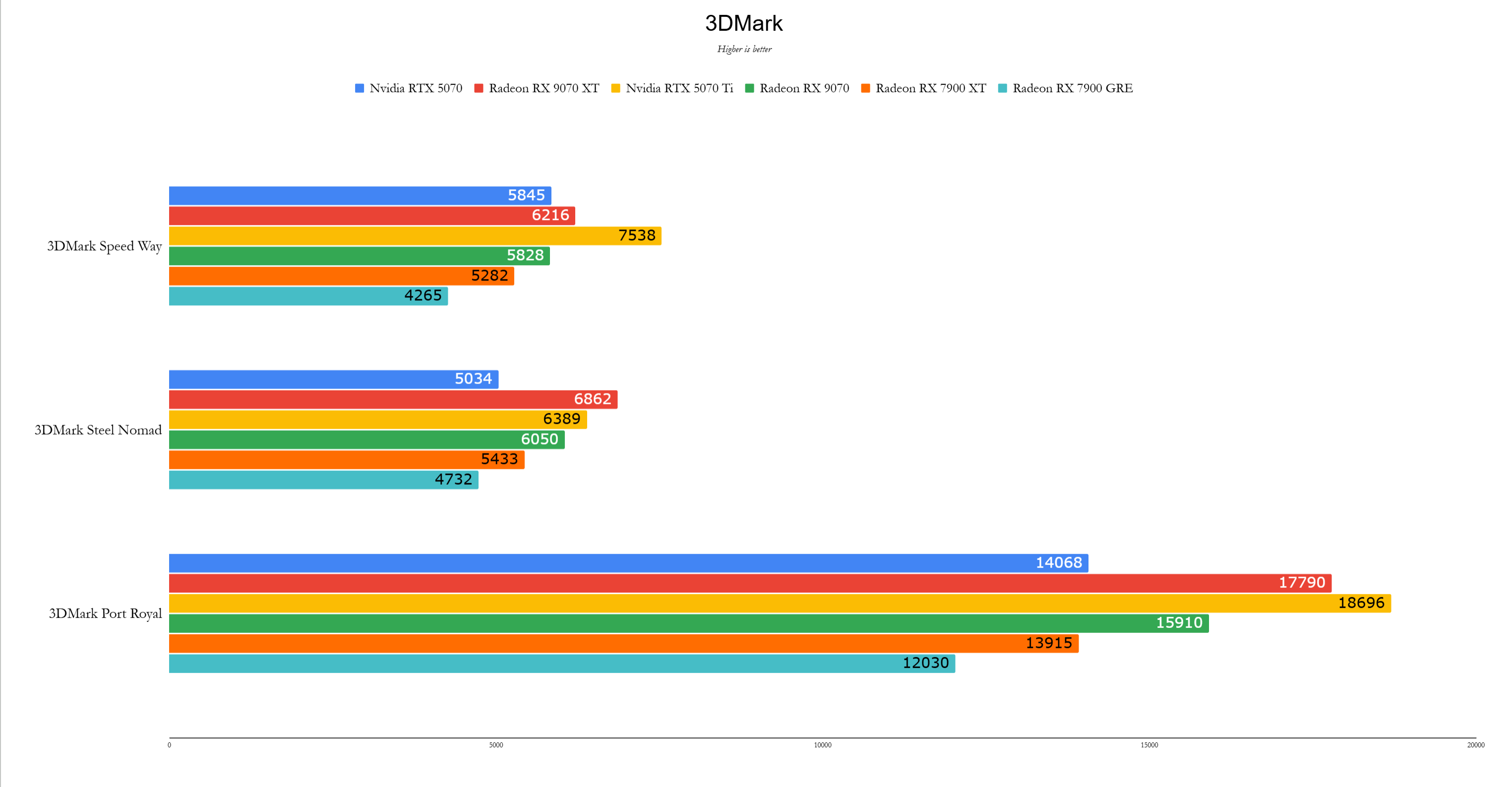
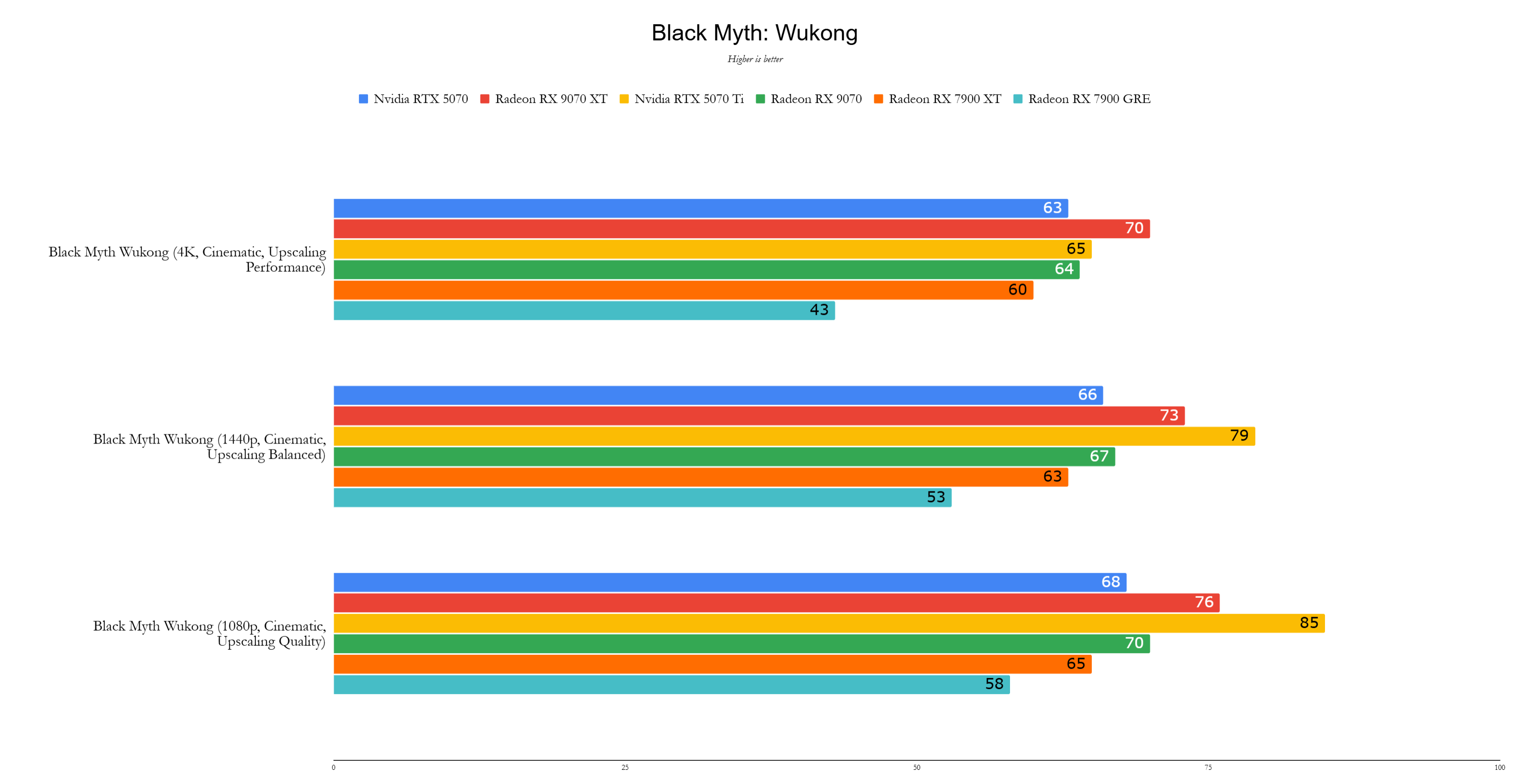 11 Images
11 Images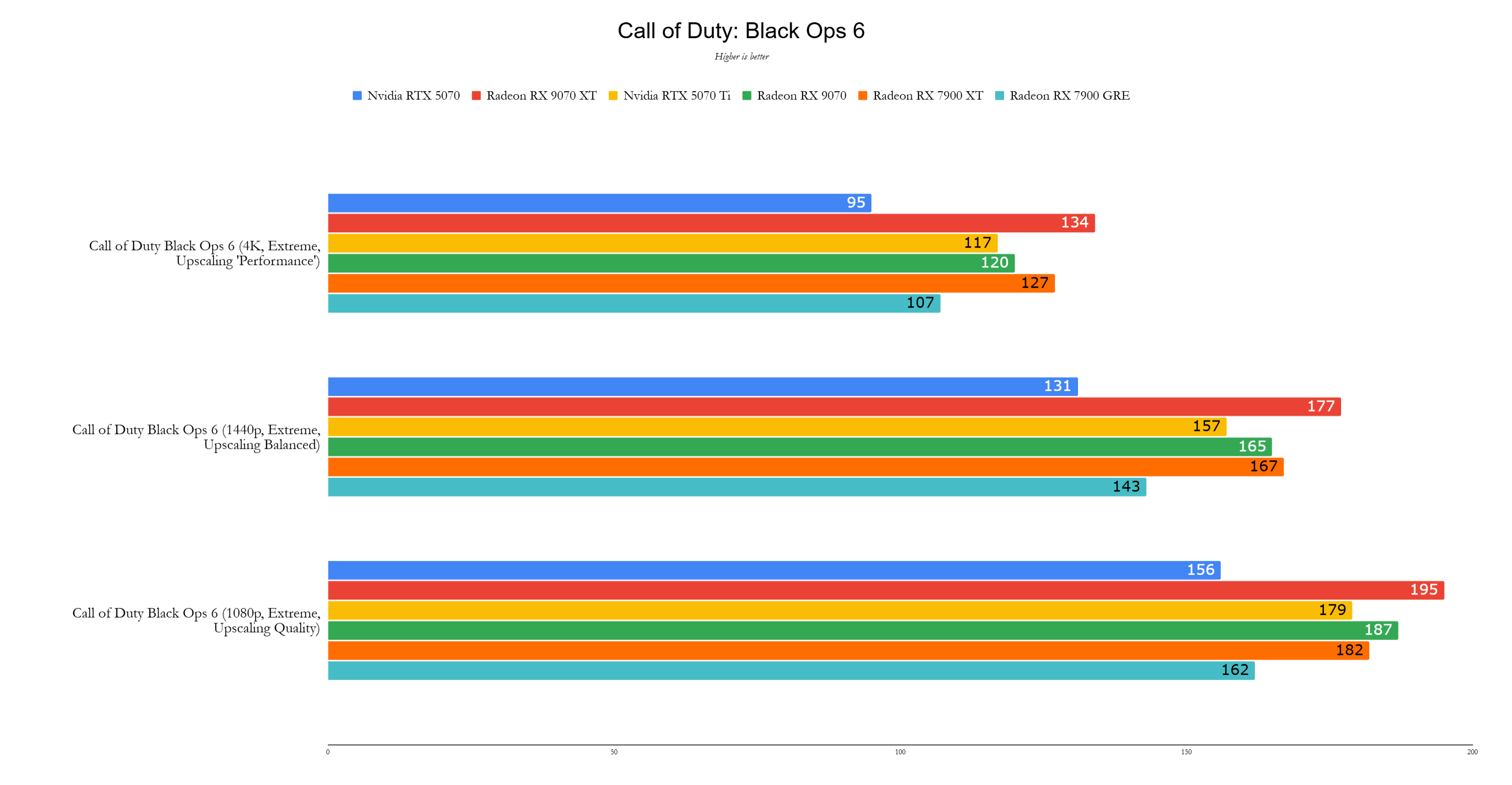
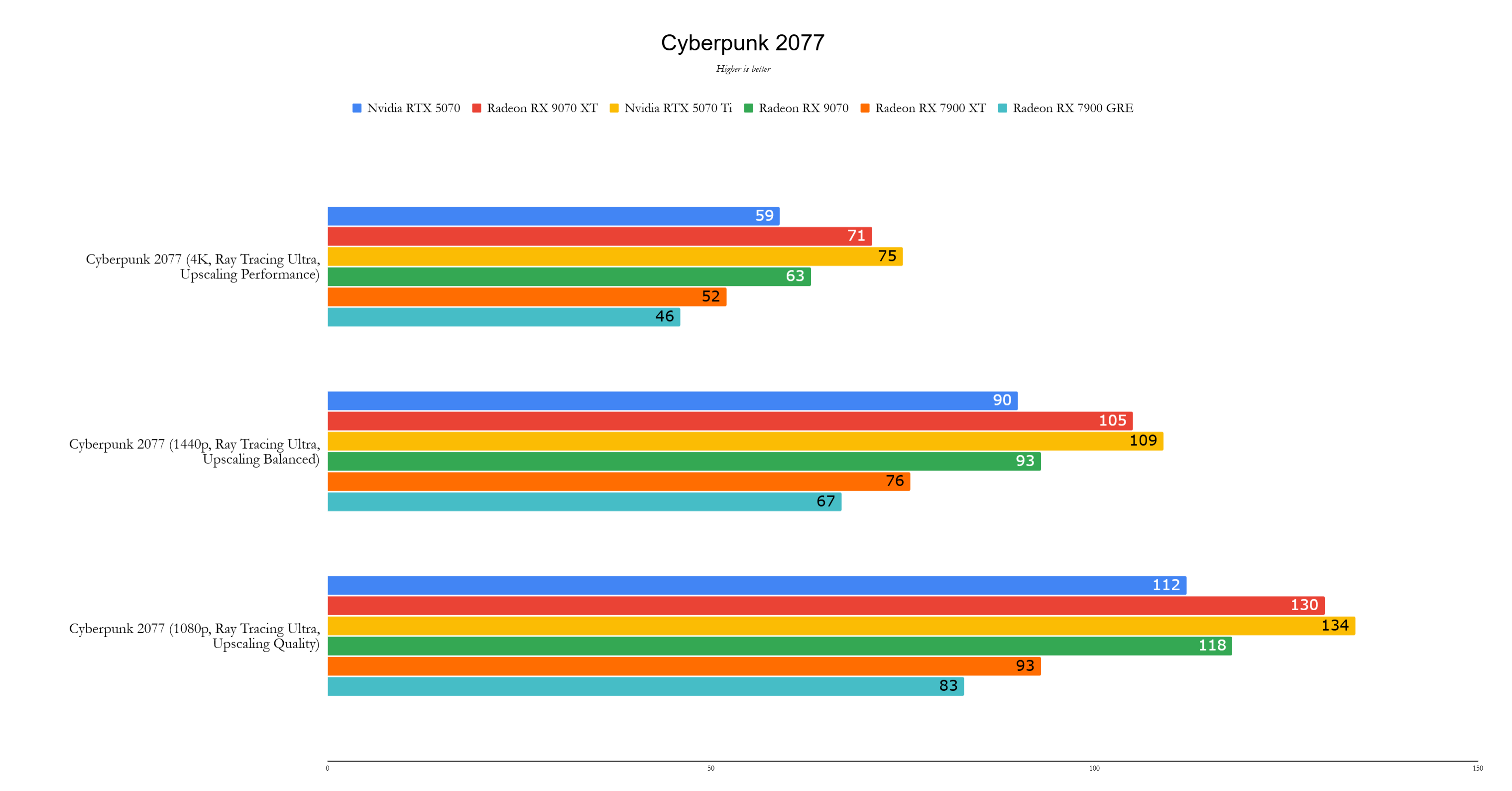
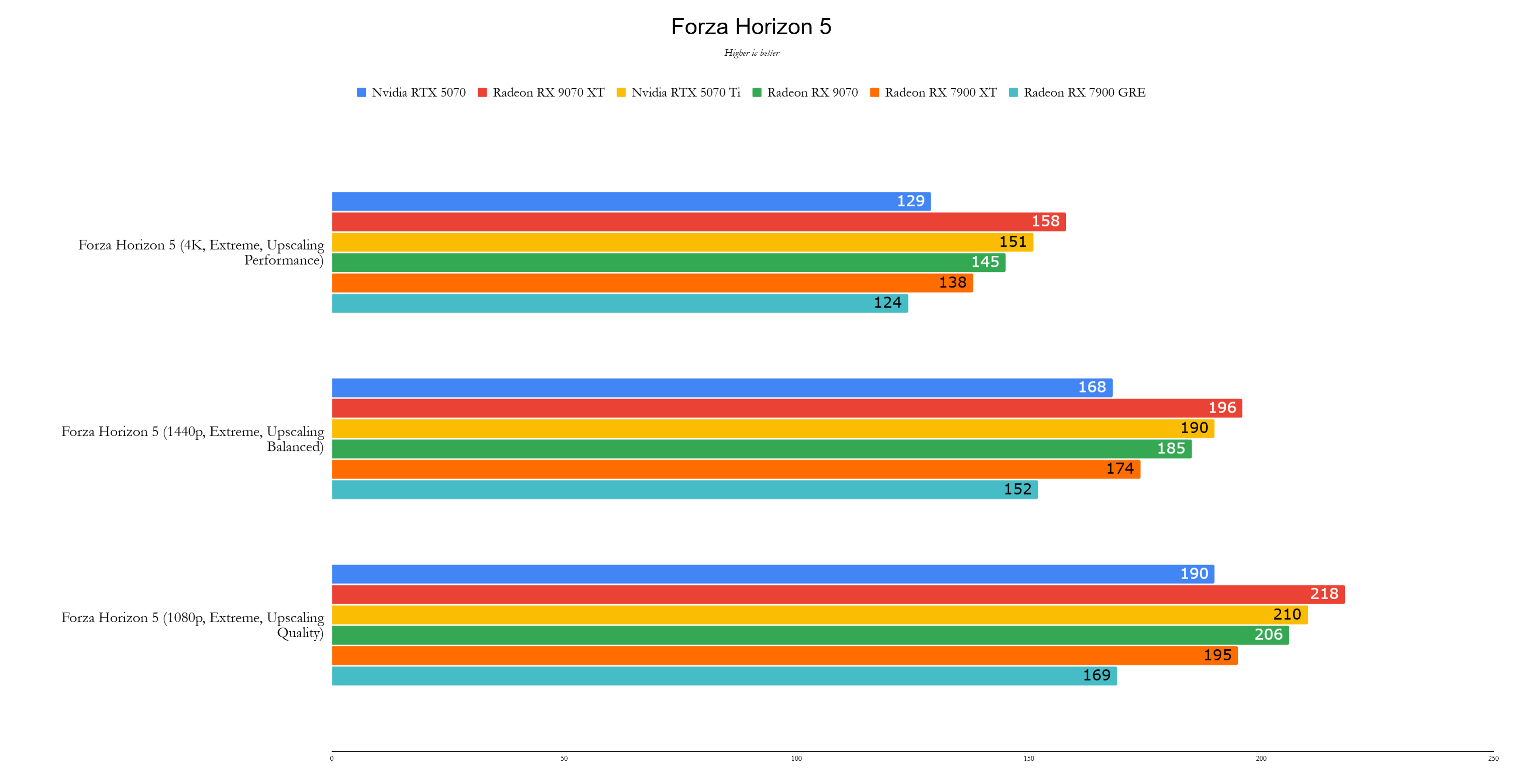
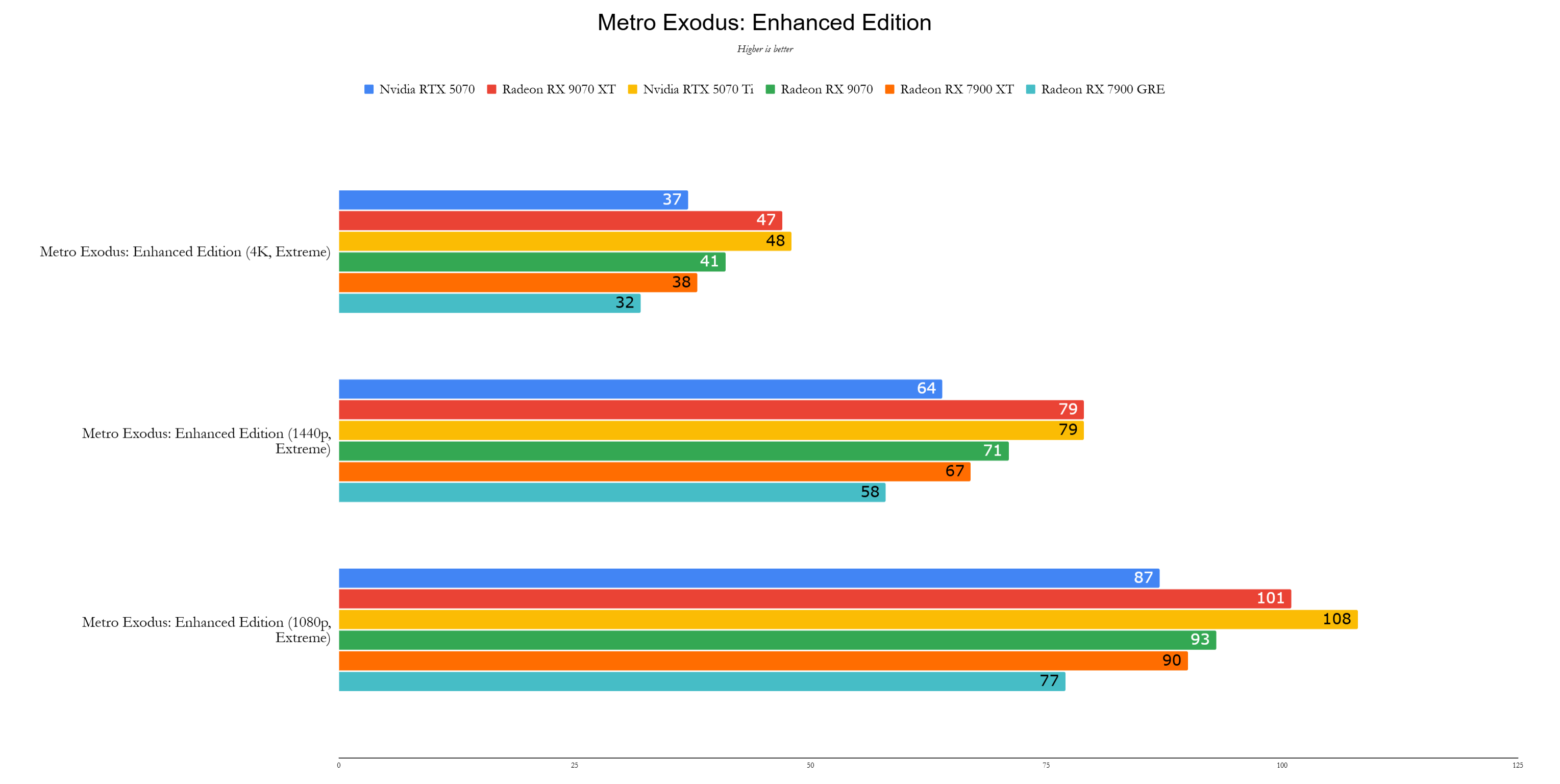
Performance
-----------AMD has delivered a powerhouse with the Radeon RX 9070 XT. Priced at $599, it undercuts the Nvidia GeForce RTX 5070 Ti by 21% while being, on average, 2% faster. The two cards are closely matched, with the RTX 5070 Ti occasionally outperforming the Radeon RX 9070 XT in certain games. However, the Radeon RX 9070 XT's competitive performance at a lower price point is a significant victory for AMD.
Across my comprehensive test suite, the RX 9070 XT proved to be 17% faster than the RX 7900 XT, which launched at $899 two years ago, and 2% faster than the new $749 RTX 5070 Ti. The card's prowess at 4K resolution is particularly noteworthy, maintaining its lead even with ray tracing enabled, making it an exceptional entry-level 4K graphics card.
All graphics cards were tested using the latest available drivers. Nvidia cards used Game Ready Driver 572.60, except for the RTX 5070, which was on review drivers. AMD cards were tested on Adrenalin 24.12.1, except for the Radeon RX 9070 XT and RX 9070, which used pre-release drivers provided by AMD.
While 3DMark isn't a playable game, it provides valuable insights into a graphics card's potential. In Speed Way, the 9070 XT outperformed the 7900 XT by 18% but lagged 18% behind the RTX 5070 Ti. However, in the Steel Nomad benchmark, the performance gap widened, with the 9070 XT achieving a 26% increase over the Radeon RX 7900 XT and even surpassing the RTX 5070 Ti by 7%.
My test system included an AMD Ryzen 7 9800X3D CPU, Asus ROG Crosshair X870E Hero motherboard, 32GB G.Skill Trident Z5 Neo RAM at 6,000MHz, a 4TB Samsung 990 Pro SSD, and an Asus ROG Ryujin III 360 CPU cooler.
In Call of Duty: Black Ops 6, the Radeon RX 9070 XT led the GeForce RTX 5070 Ti by 15%, showcasing AMD's strong performance in this title. Conversely, in Cyberpunk 2077, the RTX 5070 Ti held a slight 5% advantage at 4K with Ray Tracing Ultra settings, though the price difference between the two cards is significant.
Metro Exodus, tested without upscaling at 4K, saw the Radeon RX 9070 XT closely matching the RTX 5070 Ti, with both achieving around 47-48 fps. The previous-generation Radeon RX 7900 XT struggled here, managing only 38 fps.
Red Dead Redemption 2 demonstrated strong Vulkan performance on the 9070 XT, achieving 125 fps at 4K with all settings maxed out, compared to the RTX 5070 Ti's 110 fps.
In Total War: Warhammer 3, the Radeon RX 9070 XT fell 13% behind the RTX 5070 Ti, with a performance of 76 fps versus the 7900 XT's 71 fps.
Assassin's Creed Mirage saw the RX 9070 XT reclaiming its lead, with 163 fps outperforming the RTX 5070 Ti's 146 fps by 12% and the 7900 XT's 150 fps by 9%.
A surprising victory for the RX 9070 XT came in Black Myth Wukong, where it achieved 70 fps at 4K with the Cinematic Preset and FSR set to 40%, compared to the RTX 5070 Ti's 65 fps. This highlights the significant improvements in AMD's Ray Accelerators over the RDNA 3 architecture.
Forza Horizon 5 showcased the Radeon RX 9070 XT's competitive edge, achieving 158 fps against the RTX 5070 Ti's 151 fps, a 5% improvement.
Announced quietly at CES 2025, the Radeon RX 9070 XT feels like AMD's strategic response to Nvidia's Blackwell graphics cards. At $599, it represents a return to sensible pricing in the graphics card market. While not as fast as the RTX 5080 or RTX 5090, those cards are overkill for most users and significantly more expensive.
The Radeon RX 9070 XT evokes memories of the GTX 1080 Ti, which launched at $699 in 2017 as the fastest consumer card of its time. While the 9070 XT may not claim that title, it feels like the first truly compelling flagship graphics card we've seen since then.
-
- Uncover clues and survive long enough to make your escape - Battle for dominance on worldwide leaderboards - Customize your challenge with adjustable difficulty settingsGlitchy Frame Studio has revealed Targeted, an upcoming investigative thAuthor : Chloe Nov 13,2025
-
Former Mass Effect Developers Share Vision for Nightingale ImprovementsNightingale, the innovative open-world survival crafting game developed by Inflexion Games (led by former BioWare executive Aaryn Flynn), is gearing up for significant gameplay enAuthor : Connor Nov 13,2025
-
 4 картинки - Угадай словоDownload
4 картинки - Угадай словоDownload -
 Thot on TrialDownload
Thot on TrialDownload -
 Tabula -Tabu Kelime Oyunu 2024Download
Tabula -Tabu Kelime Oyunu 2024Download -
 โดมิโน่สยาม - Domino SiamDownload
โดมิโน่สยาม - Domino SiamDownload -
 Lucky SurpriseDownload
Lucky SurpriseDownload -
 Aftermagic - Roguelike RPGDownload
Aftermagic - Roguelike RPGDownload -
 Fruit Memory by Beat the OddsDownload
Fruit Memory by Beat the OddsDownload -
 Fruit ShowDownload
Fruit ShowDownload -
 Legendary Matagi ~ Proof of InheritanceDownload
Legendary Matagi ~ Proof of InheritanceDownload -
 Hyper PADownload
Hyper PADownload
- Black Ops 6 Zombies: How To Configure The Summoning Circle Rings on Citadelle Des Morts
- Harvest Moon: Lost Valley DLC and Preorder Details Revealed
- Roblox: Latest DOORS Codes Released!
- Silent Hill 2 Remake Coming to Xbox and Switch in 2025
- Roblox: Blox Fruits Codes (January 2025)
- Roblox: Freeze for UGC Codes (January 2025)

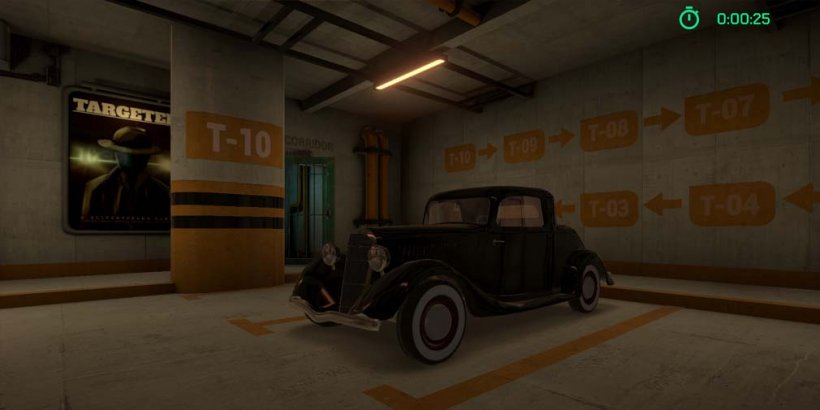






![Taffy Tales [v1.07.3a]](https://imgs.ehr99.com/uploads/32/1719554710667e529623764.jpg)




